

This is a world full of mystery and fantastical dreams, based on fossil remains, the evidence of geological history, the painstaking research of paleontologists, the artistic expression of talented artists, and the classic narratives of educators with eloquent voices. It's a series of evolution spanning billions of years, scenes from the spacetime drama of origins and extinctions, and the carefully curated fossil treasures collected by the National Museum of Natural Science over 35 years, all coming together in the exhibition "On the Oceanic Edge:The fantasy world of palaeo-creatures."
Spanning hundreds of millions of years by the evolutionary process in origin and extinction, life started from the water, and then have been running for the Cambrian eruption, marine life rose, trilobites scurried, fish danced, Cephalopoda wandered. A group of fish ventures forth, striving to be the first to conquer the shores and pioneer a new frontier of land-based attacks and defenses. Along the shores of the sea, creatures roam between two worlds, diving into the depths or crawling on land, finding their place and purpose in both marine and terrestrial environments.
After 35 years of careful curation, the National Museum of Natural Science has brought together over 300 exquisite and precious fossils, offering you a visual feast. From the oldest animal embryo fossils to the Cambrian explosion, such as the trilobite, the manatee, the leatherback turtle, and the Basilosaurus. Watch the graceful trilobites, the giant crinoid, the Coelacanth, witness the incredible giant colorful ammonite, and encounter the mighty jaws of the megalodon shark. Allow yourself to savor the mysteries of life's evolution.
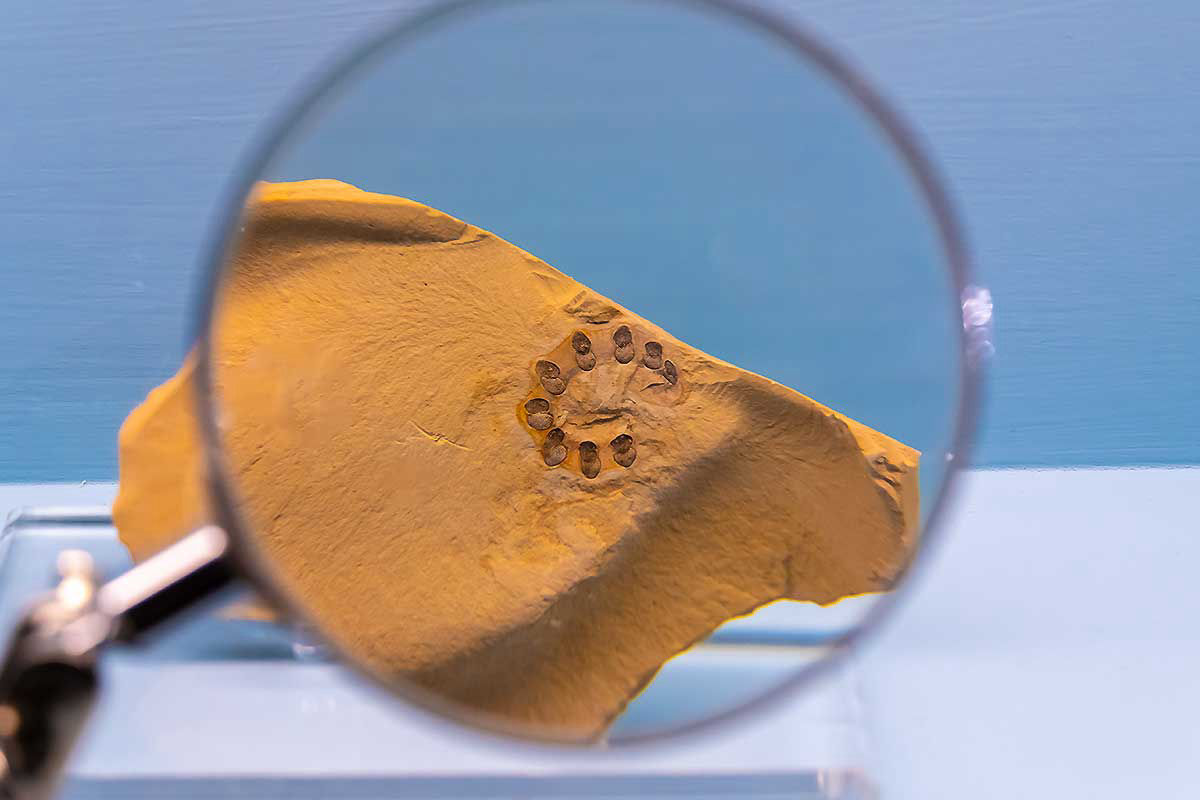
Photosynthesis using solar energy was developed by cyanobacteria billions of years ago, and algae and terrestrial plants all have the ability to photosynthesize; the light energy from the sun, through these energy conversion and accumulation of green organisms enable life on earth to thrive.
Cyanobacteria gather and grow prosperously on the coast of the warm shallow sea, forming large bacterial mats, and the produced carbonate and marine sediments cover the bacterial mats, forming layered accumulation structure of stromatolites. On the other hand, cyanobacteria were also gradually transformed into chloroplasts through endocytosis, and became the ancestors of algae in the form of endosymbiosis, and then evolved and passed on to plants.
As plants evolved from living in water to land, they need to use waxy and cuticle layers on the surface to prevent water evaporation in the body; form stomata for breathing; develop root structures to absorb water, minerals and fixation...etc. The further developed vascular tissue solves the problem of water and nutrient transport up and down, and evolves taller and more prosperous plant taxa!
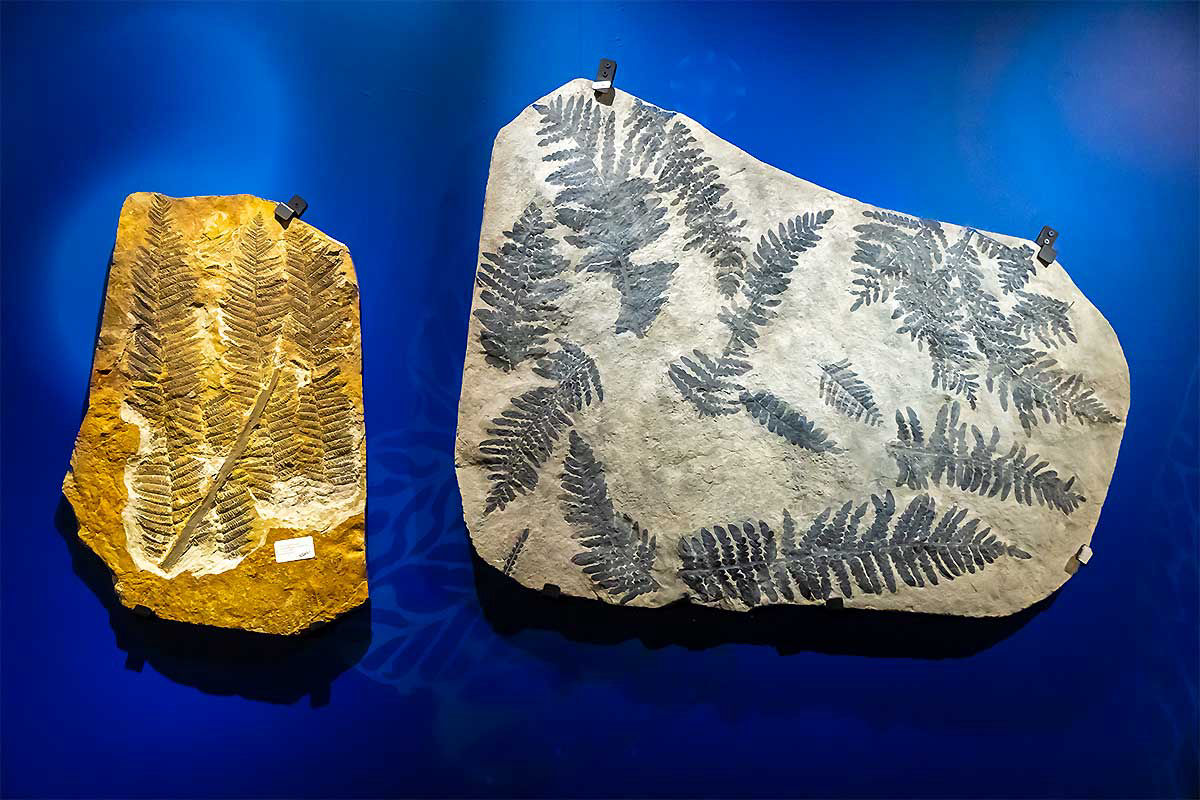
The insects first appeared on the planet more than 300 million years ago. They have survived three great extinctions since then. They were the very first animals to enter the sky, once inhabiting the huge lycophyte forests of the Carboniferous Age, dancing with dinosaurs in the Mesozoic era, and continuing to reproduce under the threat of insecticides in Anthropocene. Fossils serve as tangible evidence of their long existence and evolution.
The insect fossils displayed are from Solnhofen limestone (Altmühltal Formation), Bavaria, German and Crato formation in Araripe Basin, Brazil, respectively. The former site, in the Upper Jurassic dated back 250 million years ago, is famous for its Archeopteryx and diverse pterosaurs. Odonatans are most abundant among its insect fossils. The much younger Crato Formation, 113 million years old in the Lower Cretaceous, is the largest insect fossil site in the southern hemisphere. It is renowned for highly diverse and myriad insect fossils finely preserved in the limestone beds. Several small dinosaurs and pterosaurs have also been documented there.
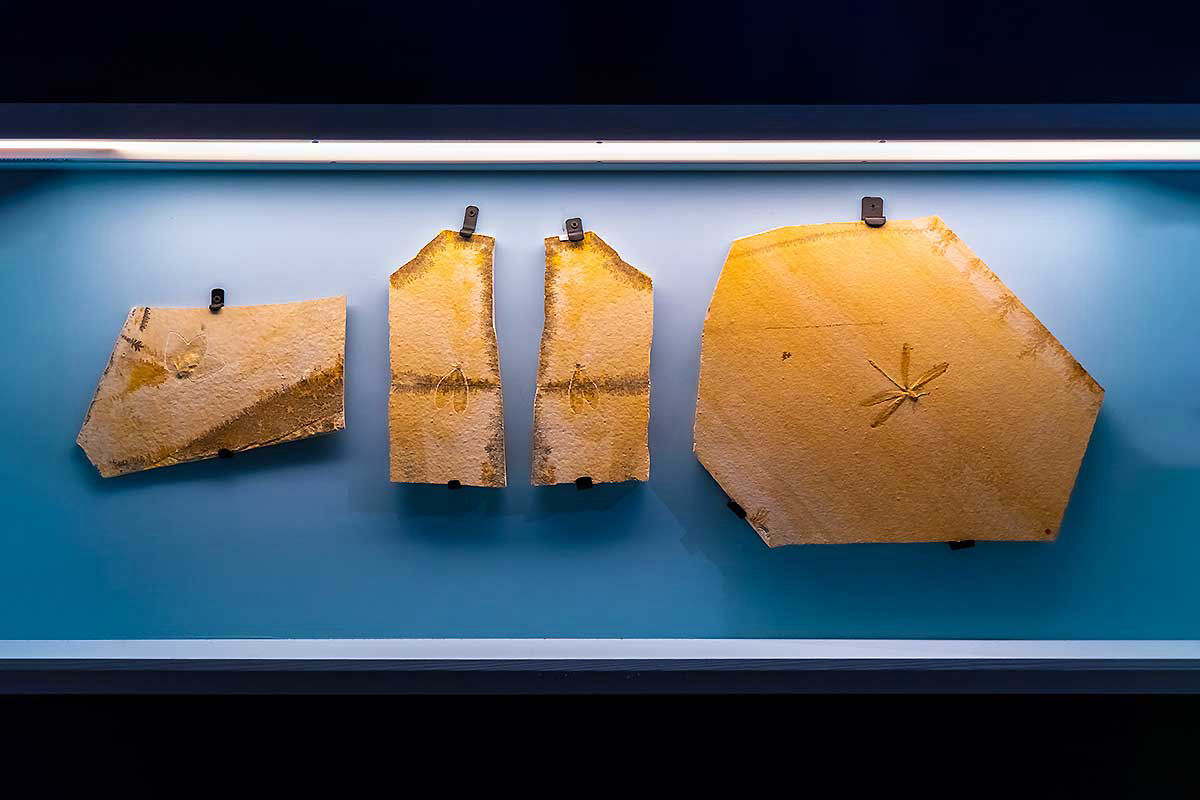
This is a fantastic and marvelous ancient ocean world.
Starting from the Cambrian explosion over 500 million years ago, life on Earth flourished in the oceans, branching out from single-celled organisms to multicellular organisms. Through the Paleozoic era, including the Ordovician, Silurian, Devonian, Carboniferous, and Permian periods, spanning hundreds of millions of years, a diverse array of ancient marine creatures emerged, including sponges, cnidarians, echinoderms, mollusks, arthropods, and even vertebrates. These varied forms of ancient marine life laid the foundation for the biodiversity of our planet, seemingly preparing and setting the stage for the subsequent colonization of land by animals and plants.
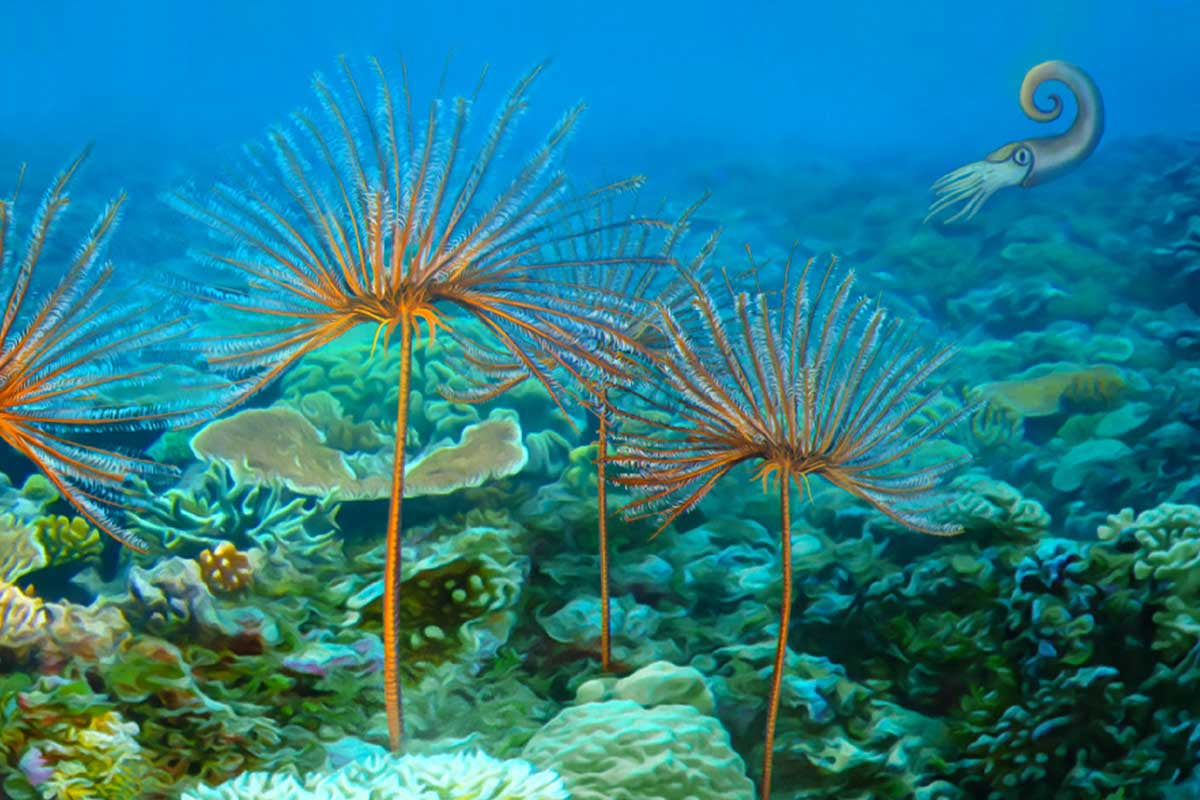
Spanning millions of years, in the realm of the oceans, the coiling and buoyancy of time have been remarkable. The cephalopod group had started with a straight, angular shell adorned with long spines, they gradually curved their shells, eventually evolving into spiraled coils that allowed them to effortlessly float and sink. It turns out that the chambers within their shells, aided by siphuncles, adeptly absorb and release water, regulating their body buoyancy and enabling them to ascend and descend in the marine environment. Inspired by cephalopods, humans have emulated their structural principles to create submarines!
The cephalopod family has spanned through the Paleozoic, Mesozoic, and Cenozoic eras. Modern cephalopods such as octopuses, squids, and cuttlefish possess intricate head structures, complex nervous and visual systems, and highly flexible tentacles equipped with suction cups to capture prey. They have even developed a jet propulsion mechanism, utilizing water ejection for generating thrust, allowing them to move rapidly and maneuver efficiently in the marine environment or escape from predators.
The most representative fossils of cephalopods are the ammonites and the nautiluses. Nautiluses have simple and smooth suture lines, while ammonites exhibit intricate and twisted patterns. Both possess siphuncles running through their entire bodies, but in nautiluses, the siphuncle is located at the center of the shell, whereas in ammonites, it is positioned on the outer side of the shell. Additionally, when nautiluses grow a new shell, it envelops the existing one, whereas ammonites do not.
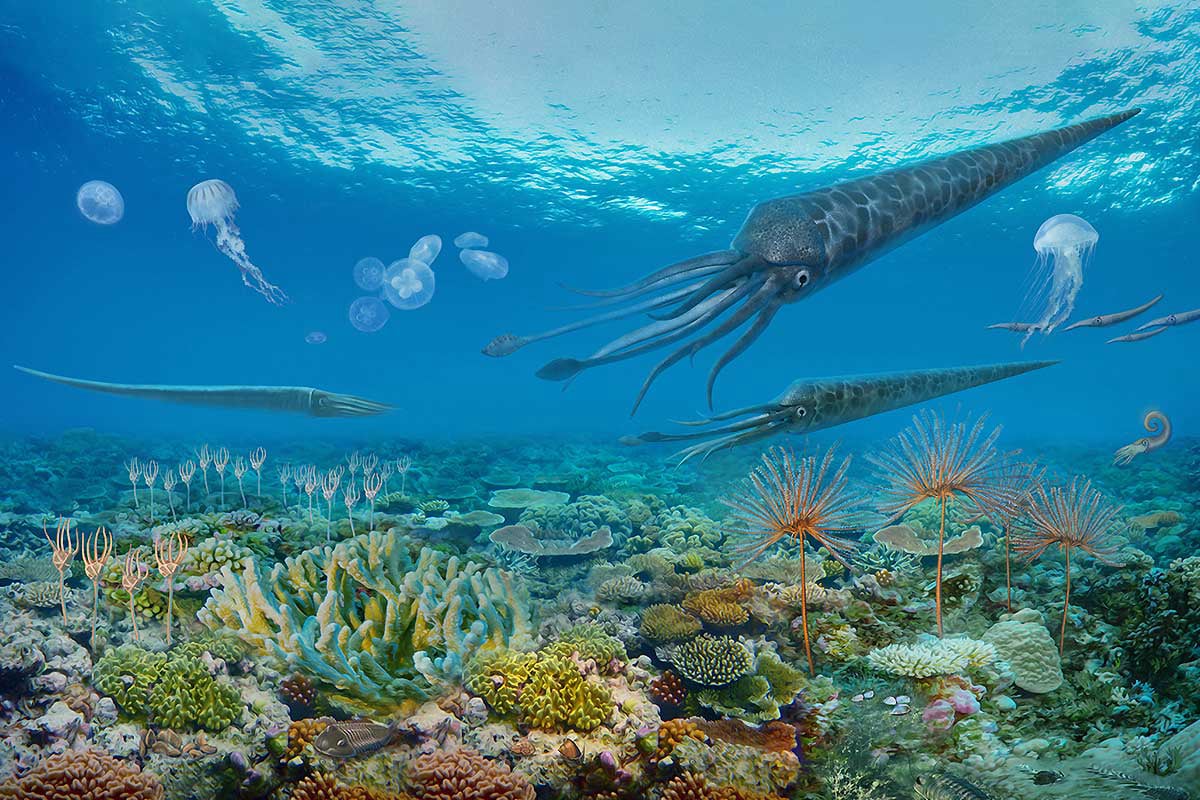
Fish, the earliest vertebrates on Earth, can be traced back to the late Cambrian, approximately 500 million years ago. Throughout the evolution of fish, there were ostracoderms without jaw structures, which appeared around 400 million years ago in the Ordovician and Silurian. Then the placoderms, the most primitive jaw fish with both head and chest covered in bony plates, around 300 million years ago in the Devonian. Subsequently, cartilaginous fishes (sharks) and ray-finned fishes (ancestors of modern fish) emerged successively. They were covered in scales and were more adept at swimming, developing various hunting behaviors and lifestyles. This laid the foundation for the diverse and widespread world of fish in the oceans today.
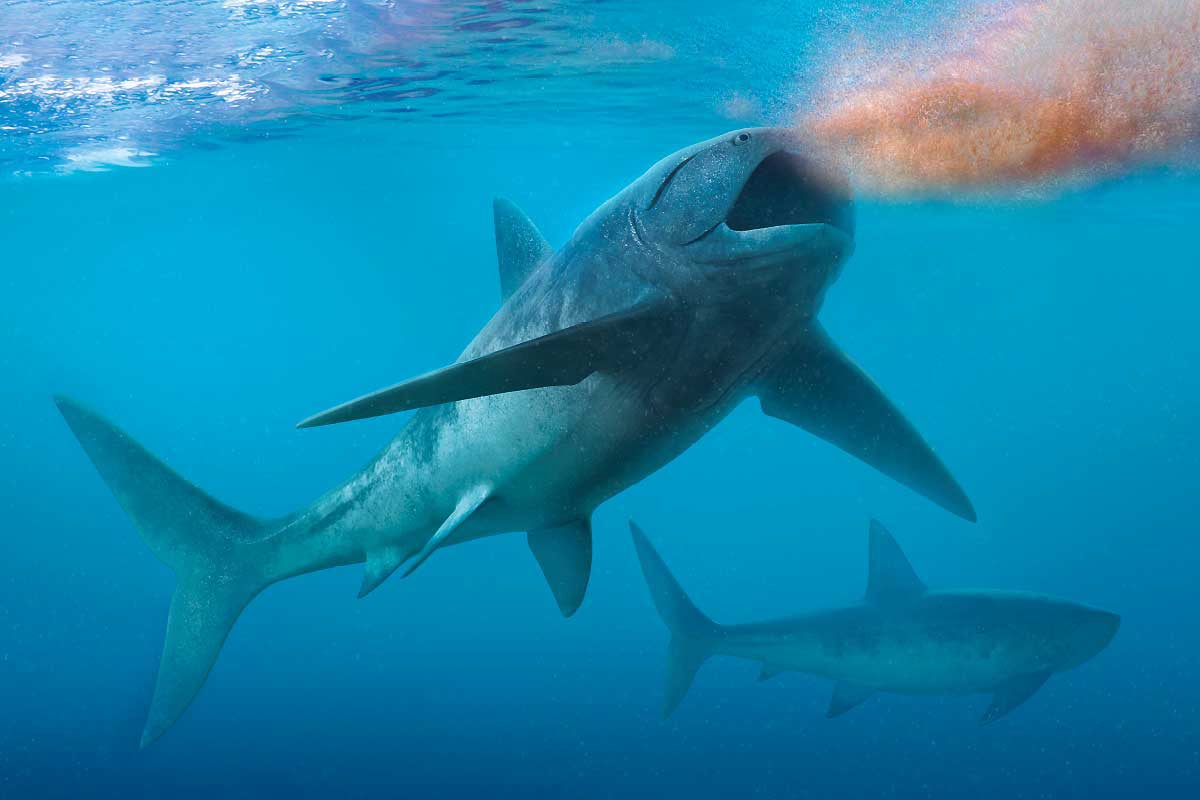
From the ocean to the land, it has been more thrilling in vertebrates between attack and defense in survival competition. The predator sprints and runs with its toes, catches the prey with sharp front claws, stabs the prey with well-developed canines and bites or pulls tightly, and the blade-like molars tear and cut.
Herbivores use the eyes located on both sides of the head and the wide vision to find out the enemy first and fast running by unguligrade to avoid natural enemies. Some herbivores put on defensive armor, or dig holes to avoid enemies. Some herbivores even develop terrifyingly weapons or hard and powerful head horns, fighting to the death with carnivores!
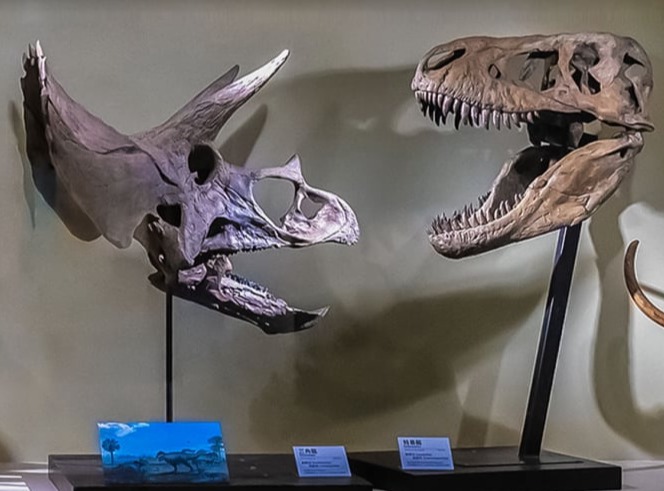
On the Oceanic Edge
The fantasy world of palaeo-creatures

2023/06/30 ~2024/04/28
The 4th Exhibition Gallery
Guided Tours:11:00, 14:00